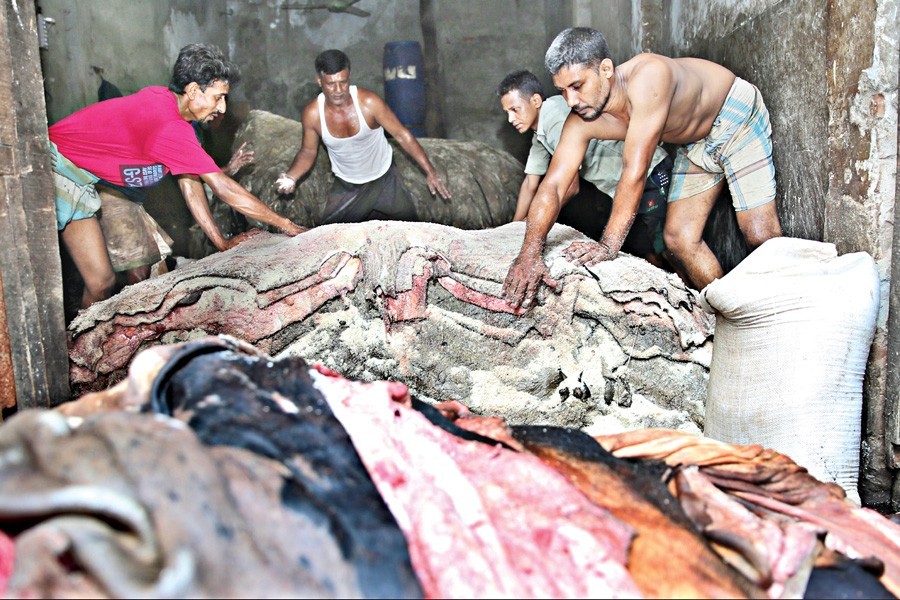It is about 4.0-5.0-billion Taka business every year around this time. But this year the raw hide business is in turmoil. Seasonal traders who actually collect hides from the original source are about to incur losses on account of the sluggish demand and falling price. No trader can run trade if the selling price is lower than or even equal to the procurement price. This is the case this year. The small traders bought hides at the prices fixed officially but at the wholesale level they are compelled to dispose of their collection at the same rate of Tk 500-700 depending on sizes. Wholesalers now dictate the terms on the plea that demand for raw hides and leather goods in the international market, China in particular -the primary destination of such goods from Bangladesh -is on the wane. They also refer to the latest trade war between the United States of America and China, of which this sluggish demand is a ripple effect.
Now this argument is intriguing. The wholesalers argue that the diminishing demand prevails for three months now. If this is so, they were fully aware of how much hides and skins they would collect for processing. Reportedly, there is an annual demand for 12 million pieces of hide and half of which is supplied during the Eid-ul-Azha. Now the question is, if they will go for processing of fewer pieces of raw hides than they purchase in a year of normal business. Or, if this is just a ploy to keep the prices down. If this is on account of a glut of raw hide directly related to sacrifice of a greater number of animals this time, this may have followed the rule of demand and supply.
Whatever may be the case, market here is under the sway of big businessmen. A lame excuse on the sideline is quite interesting. The excuse that international buyers are reluctant to visit Savar Tannery Park hardly sounds convincing. In fact, the tannery park is better organised, cleaner and should attract foreign buyers even more. That more than 200 tanneries have been closed down may leave a negative impact. Tanneries used to purchase, as the report goes, 10 per cent of their yearly target during the Eid. Now in total more than 250 tanneries are not in the business and, therefore, the impact is sure to be dampening enough on the market.
Each year complaints are brought against this or that party when the collection of hide during the Eid appears as a hectic exercise. After all preservation of this precious commodity is time-bound and therefore has to be completed within a limited time frame. As the economy of raw hide is large, different players play different games in order to derive undue benefits from trade in it. How this situation can be tackled smartly is a million-dollar question. But given the unclean records of many in the business, a durable solution to this problem should be explored seriously.


